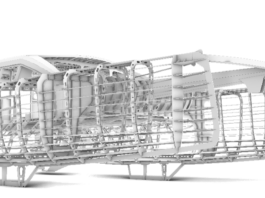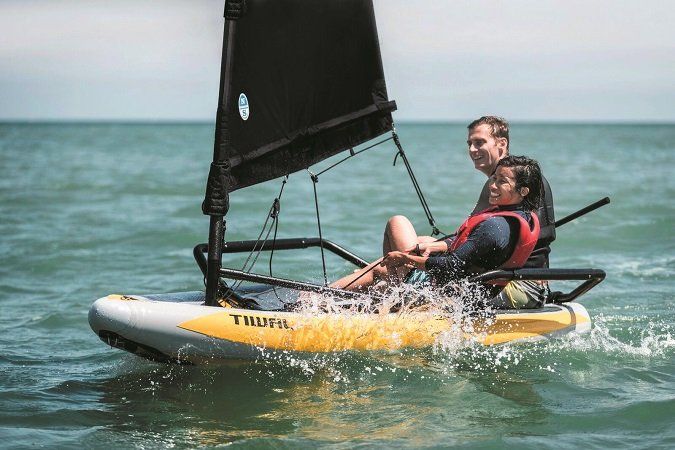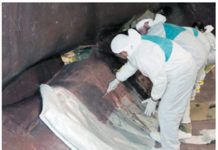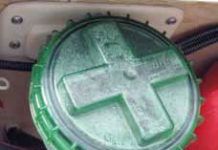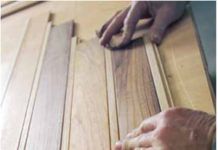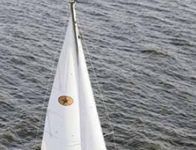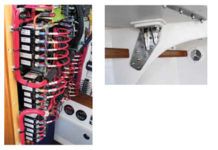Practical Sailor 2016 Index
Practical Sailor 2016 Index
Living Small on the Big Sea
Readers familiar with the work of William Crealock-the renowned designer of the Crealock 37, the Cabo Rico 34, the Dana 24, and at least 30 other production-built vessels-understand that his designs are steeped in practicality. Crealock famously wrote: Seaworthiness in a cruising boat has to be the No. 1 consideration. It doesn't matter how cute the boat is if it doesn't get [to the destination] in one piece. And those familiar with his life are aware that his knowledge of sailing wasnt just grounded in the study of design, but also in extensive hands-on experience at sea-an imperative for any designer of boats intended for offshore.
Hand Laid in the USA
Workers at Pacific Seacraft laminate these hulls by hand, using vinylester resin and layers of biaxial fiberglass laid at 45- and 90-degree axes for enhanced multidirectional strength. The decks are cored with balsa wood except for those areas where fasteners pierce through or fixtures are mounted; those spots are cored with either marine plywood, high-density foam, or solid fiberglass. The two-tone deck is accomplished by masking off the nonskid areas in the mold prior to gelcoat application. This yields a very durable surface.
Practical Sailor 2014 Index
Practical Sailor 2014 Index
BJ40: A Well-designed and Well-built Racer-Cruiser
The fiber-to-resin ratio was increased through a vacuum-assisted resin infusion, a process that better wets out the laminate and simultaneously squeezes out all the excess resin. The mechanical properties and blister resistance of vinylester resin are better than its polyester cousin, and this uptick in materials and laminating process dovetailed with the use of Divinycell foam to deliver a strong, stiff, one-piece hull with a an inward-turning flange. The BJ40 hull carries a 10-year warranty against osmotic blistering.
EPA Mandate Sparks Fuel-vent Filter Test
Every day, as the temperature rises and falls, gases inside your fuel tank expand and contract. The emissions released during this diurnal breathing have raised concerns at the U.S. Environmental Protection Agency, and in July 2011, the agency mandated passive carbon canister filters on all installed gasoline-tank vent lines to collect fuel evaporation emissions. While older boats are not required to retrofit, we wondered how such a filter would affect fuel quality and engine performance-and whether carbon is the most effective filter media-so we launched tests using E10, gasoline, and diesel to find out.
Esteros solid FRP hull, balsa-free deck is built to last
Island Packet Yachts has been building cruising boats for over 32 years. It builds five different hull designs—about 80 boats per year—to American Boat and Yacht Council and European Category A (offshore) standards.
PS Boat Review: Island Packet Estero
Florida-based Island Packet targets a relatively narrow niche, so the toughest competitors to its new boats are often older Island Packets. Introduced in 2010, the 36-foot, shoal-draft Estero is the company’s latest attempt to introduce a distinctive model that doesn’t stray too far from the company’s proven formula for success: moderate displacement, full-keel cruisers designed to be lived on, sailed far and in comfort, and endure the bumps, scrapes, and storms that cruising boats inevitably encounter. After sailing the Estero on Florida’s Sarasota Bay and inspecting its interior, construction, and systems, Practical Sailor testers noted that the shoal-water cruiser will appeal strongest to Island Packet fans who’ve been waiting for a shoal-draft, easy-to-sail boat that compares to the IP37 in terms of interior space. These strengths will be most apparent on intracoastal or riverine adventures like the Great Loop.
Estero’s solid FRP hull, balsa-free deck is built to last
Island Packet Yachts has been building cruising boats for over 32 years. It builds five different hull designs—about 80 boats per year—to American Boat and Yacht Council and European Category A (offshore) standards.
Leadership 44 is Strong, Stiff, and Lightweight
The Leadership 44 is built in Morris Yachts’ factory on Mt. Desert Isle, Maine, using advanced building materials and construction. Known for its precision semi-custom boat building, the company was launched in 1972 by the late Tom Morris. His son, Cuyler, is now the president and chief development officer.


































